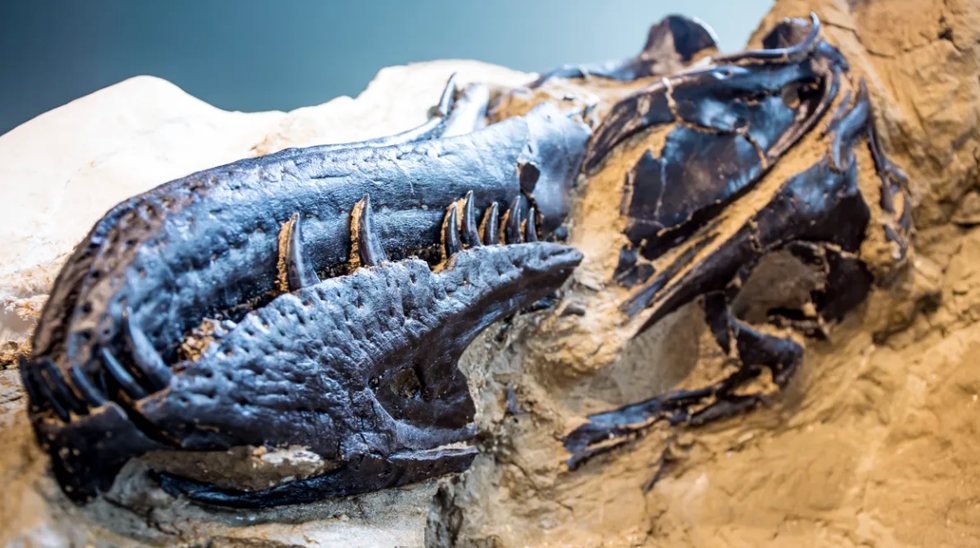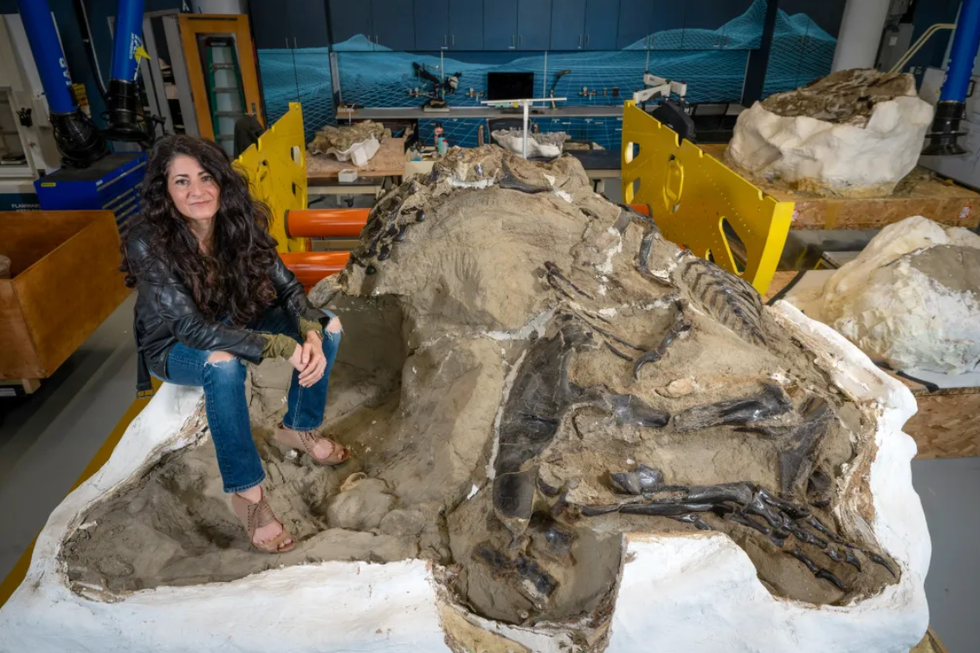Palaeontology breakthrough as scientists reveal new T-Rex cousin species after 'duelling dinosaurs' discovery
The authors of the study say the skeleton of Nanotyrannus featured traits that T. rex never had
Don't Miss
Most Read
Latest
A new palaeontological breakthrough based on analysis of the “Dueling Dinosaurs” fossil has revealed that the T. rex had a smaller cousin species.
The “Dueling Dinosaurs” fossil was unearthed in 2006 and is considered one of the most dramatic discoveries in palaeontology.
The fossil features a Triceratops, a tanky horned dinosaur, and a lean, agile carnivorous dinosaur, believed to be a T. rex, engaged in combat.
Researchers have long debated whether the carnivore in the “Dueling Dinosaurs” fossil was a juvenile T. rex or a mature example of a separate species.
TRENDING
Stories
Videos
Your Say
Researchers from North Carolina State University and Stony Brook University have now published a new study in Nature claiming that the carnivore is a new species they have named Nanotyrannus lancensis.
Lindsay Zanno, who leads the research team, said:
“This fossil doesn’t just settle the debate.
It flips decades of T. rex research on its head.”

Part of the dramatic discovery
|NC MUSEUM OF NATURAL SCIENCES
The team reached this conclusion by examining the animal’s age and maturity, bone development and fusion, and overall anatomy.
They determined the age and maturity by slicing tiny samples from its bones and reading the growth rings — similar to how one would read rings from a tree.
Each ring marked a year of life, and through this method they established that the dinosaur was around 20 when it died.
By studying the fossil’s bone fusion, they determined it was an older animal, as young dinosaurs have looser connections between bones.
LATEST DEVELOPMENTS

Lindsay Zanno led the study
|NC STATE UNIVERSITY
The discovery challenges the long-held belief that the T. rex ruled the Late Cretaceous period alone.
Dr Zanno said: “This discovery paints a richer, more competitive picture of the last days of the dinosaurs.
T. rex did not reign uncontested.”
They believe Nanotyrannus lancensis would have been roughly six metres long and weighed about two-thirds of a tonne — compared with the much larger T. rex, which was double the length and weighed more than seven tonnes.
The authors of the study say the skeleton of Nanotyrannus featured traits that T. rex never had, such as longer arms for manipulating prey, extra teeth, and fewer tail bones.
They argue these traits could not be temporary characteristics of a growing animal, but are evidence that Nanotyrannus is a separate species.
James Napoli, co-author of the study, said: “For Nanotyrannus to be a juvenile T. rex, it would need to defy everything we know about vertebrate growth.
"It’s not just unlikely — it’s impossible.”
Dr Zanno and Dr Napoli also examined more than 200 other tyrannosaur fossils and argue that another skeleton, previously identified as a “teen T. rex”, should be its own species named Nanotyrannus lethaeus — after the River Lethe of Greek myth, the river of forgetfulness.
This is because that species had been “forgotten” in plain sight for years.











